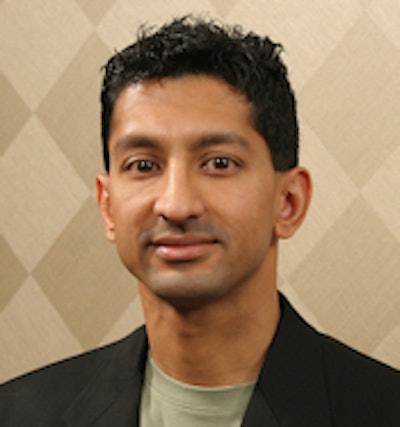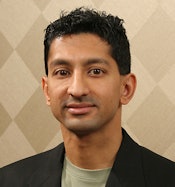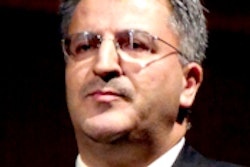
A successful community hospital low-dose CT (LDCT) lung screening program is feasible and can be put in place relatively quickly, according to an article published online in the Journal of the American College of Radiology.
The findings are timely, as the U.S. Centers for Medicare and Medicaid Services (CMS) is mulling over whether to pay for screening in the wake of a recent positive recommendation by the U.S. Preventive Services Task Force (USPSTF). On February 10, CMS opened a 30-day public comment period regarding a proposal to make CT screening for high-risk individuals one of Medicare's covered preventive services.
Researchers from Indiana described their experience of establishing and running a multidisciplinary community hospital lung cancer screening program, outlining key components they implemented to make the effort a success (JACR, February 13, 2014).
"Our ... experience says that a successful community hospital LDCT lung screening program is possible," wrote lead author Dr. Samir Patel and colleagues from Elkhart General Hospital. "In the community hospital setting, we have implemented all the important components, including defining eligibility criteria, performing an LDCT protocol, using standardized structured reporting ... and having a multidisciplinary group of experts for consultation and management."
 Dr. Samir Patel.
Dr. Samir Patel.
The hospital serves Elkhart County, which has a smoking rate that is among the state's highest at 23.4% (Indiana's rate is 17%), according to the authors. Data from the Elkhart General Hospital Cancer Registry over the past 10 years show that 50% of lung cancers diagnosed in the area were stage IV.
Because smoking is a significant health concern in the county, lung cancer screening is even more necessary, the authors wrote. Lung cancer screening costs (about $19,000 per life saved) are comparable to those of other screening tests, they added: Screening mammography for breast cancer costs about $31,000 to $51,000 per life saved, and colorectal screening with colonoscopy costs about $19,000 to $29,000 per life saved.
Patel and colleagues established a multidisciplinary thoracic oncology clinic that brought together staff from thoracic surgery, radiology, pathology, medical oncology, radiation oncology, and pulmonology to assess patients' diagnostic exams and guide treatment. Additional staff included a social worker, registered dietician, clinical trials research nurse, smoking cessation counselor, and lung nurse navigator. The screening part of the program was designed to follow patients for several years.
Potential participants in the screening program were asked to complete a questionnaire to define whether they were high-risk, tracking factors such as age, pack-per-year history, and current and former smoking status. Once the CT request was made, it was reviewed and the patient was informed if there were out-of-pocket costs, as the exam isn't covered by all insurers. Hospital administrators and radiologists worked to find the most effective discounted price, so the cost would not be prohibitive for patients without insurance coverage.
"The self-pay price for screening lung CT at our institution is $199, approximately the cost of cigarettes in one month for a 1.5-pack-per-day smoker," Patel and colleagues wrote. "Because of the high incidence of unemployment in our area, we secured a grant from our hospital foundation to cover scans for low-income individuals with no insurance."
Patients were imaged with a low-dose CT protocol. At Elkhart General Hospital, these scans are completed with half the dose reported in the National Lung Screening Trial (NLST). Because patients undergo yearly (or more) CT scans, this is key to the success and safety of a lung cancer screening program, according to the group.
Within five days of their initial exam, patients were notified of the results and scheduled for appropriate follow-up. Appointments were entered into a database that generated a notification if a patient canceled or did not show up.
The hospital also established a format it calls the Lung Reporting and Data System (L-RADS) for reporting the results for all LDCT scans for lung cancer screening. The system provides consistency for radiologists reading the scans and for referring physicians for follow-up appointments, the authors wrote.
In 13 months, the program screened 150 patients and increased its referring physician base to 20 doctors. Of the 150 LDCT screenings, the following recommendations were made:
- 100 patients (67%) for 12-month follow-up
- 28 patients (19%) for six-month follow-up
- 11 patients (7%) for three-month follow-up
- Two patients (1%) for biopsy
Concerns about lung cancer screening include not only radiation exposure, but also the possibility of too many false positives, according to study co-author Toni Klatt-Ellis, an oncology advanced practice nurse. In the first year of Elkhart's program, however, 27% of scan interpretations were recommendations of follow-up in fewer than 12 months, compared with the NLST rate of 39%.
"Lung cancer screening naysayers talk about unnecessary tests, but our program demonstrated false positives at less than the national rate," Klatt-Ellis told AuntMinnie.com. "Our work shows that community physicians can conduct a low-dose lung cancer screening program -- and do it well."





















